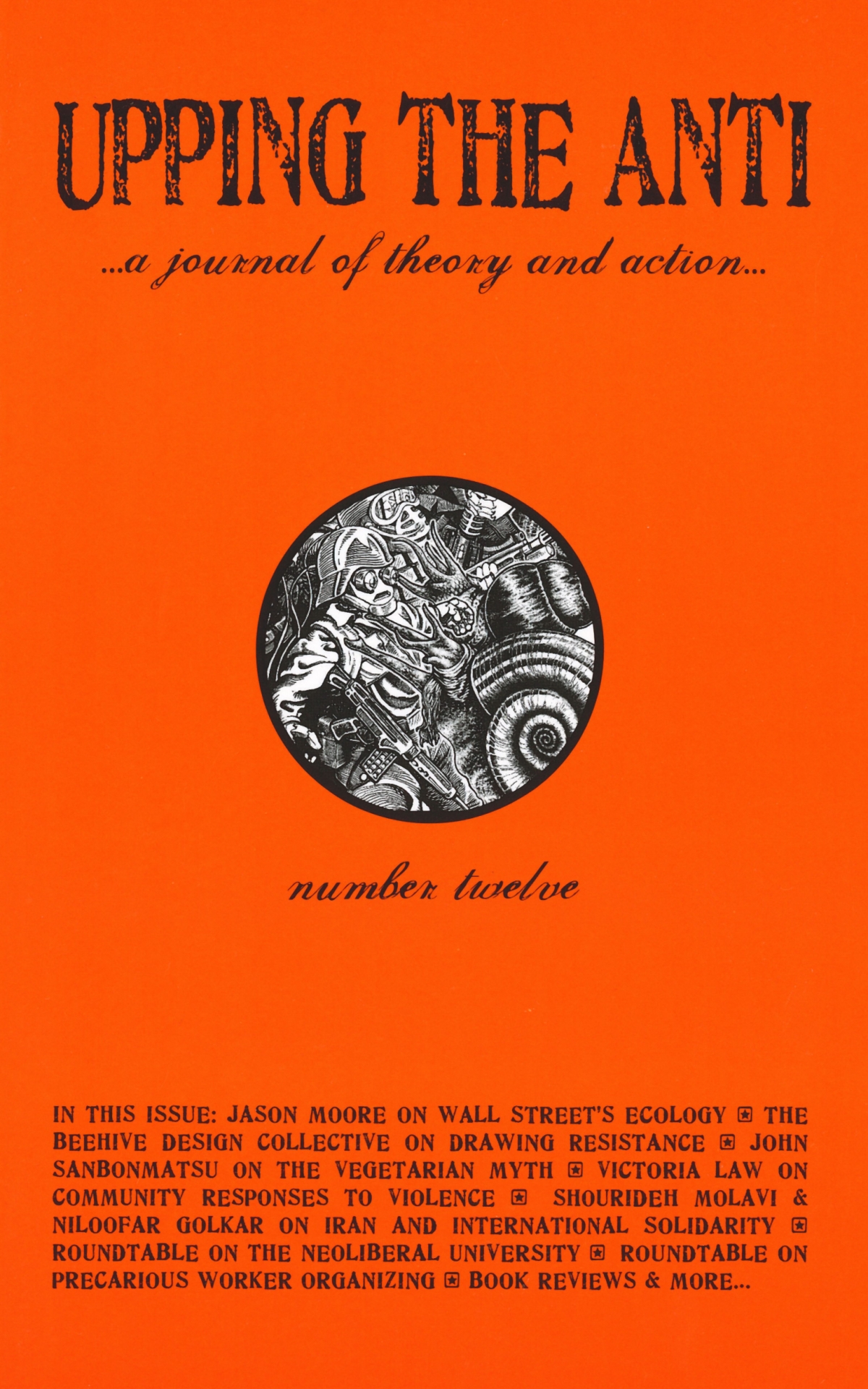The Black Bloc and the New Society
Dear UTA,
First and foremost, thank you for the contributions made in the editorial “Behind the Mask: Violence and Representational Politics” (UTA 11). In the midst of heavy criticism and dismissal both from within and outside movement circles, it was refreshing to read an article that was supportive yet constructively critical of the black bloc. Acknowledging the value and illuminating role of confrontational tactics while simultaneously taking note of their very real limitations is of huge importance. In my experience, discussions surrounding violence and its potential role in social movement struggles too often degenerates into uncritical or even dogmatic support of particular forms of action.
There is no one tactic, violent or otherwise, that is the solution to all of our organizing woes. There is a place within our movements for the black bloc, as there is space for more confrontational actions, those of a non-violent nature, and everything in between. The editorial rightly emphasized this fact, and clearly outlined the specific value of more aggressive tactics, for instance bringing into question the state’s monopoly on the use of force, and making clear the violence upon which politics necessarily rests. Before continuing, I want to make a few things clear. I do not think that the black bloc is the be all and end of all of militant actions, nor do I think that it is a tactic that should be placed in any sort of privileged position within our struggles. In some instances it can be incredibly effective, while in others completely counter-productive. Furthermore, as an anarchist I think it has been unfortunate that, as a result of the sensationalist media coverage of black bloc actions, anarchism for many people is predominantly associated with the wanton destruction of property and black hoodies.
That said, there are a few issues, or at least omissions, in the editorial that I think are worth mentioning. The editorial quite aptly states in reference to the actions of the black bloc that:
while the bloc’s violence effectively highlighted the limits of representational politics, it did not yet point to a world beyond it. Paradoxically, in the very act of making the centrality of violence to all politics visible, the black bloc revealed its own limits as well. After all, smashing windows does not even begin to approximate the acts required to create a new society (40).
First of all, the discussion of the black bloc and the extent to which it fails to propagate a constructive political project completely skirts the prefigurative characteristics of the bloc. It is absolutely true that smashing a window does not begin to approximate the acts required to create a new society; however, there is more to a black bloc than the smashing of windows. The bloc, as a pulsing body on the street, is organized horizontally. Decisions are made on the ground by all participants outside of any commitments to judicial-legal norms, while camaraderie and mutual aid very much structure the interactions between those who comprise the bloc. The picture of the bloc from the outside is very different from the reality and experience on the inside; the ethos of the black bloc is one of solidarity and collective care. In the centre of a black bloc I know that if a cop attempts to arrest me there will be countless comrades, many of whom I may have never met before, who will immediately come to my defence. In the same way, I know if I fall there will be someone there to pick me up and I know if I’m thirsty there will be someone who will share with me their last drop of water. Crucial to the project of creating a new society is creating new ways of being, interacting and organizing with each other. The relationships formed, the organizational experiments that take place, and the positive ways of interacting that occur within a black bloc is a part, however small, of this process.
Destruction is also integral to this ongoing process – you have to attack and tear down segments of society so that you may build anew in the ruins. At the risk of sounding cliché, my final criticism of the editorial concerns the extent to which it seems to ignore the idea that acts of destruction can be intimately tied to acts of creation. Destructive actions can create spaces, physical or intellectual, in which creative projects and the seeds of a new society can blossom. Making arguments for and providing examples of alternatives is crucial, but so too is actively illustrating that the institutions that define our society are not infallible nor out of reach. The smashing of a bank window doesn’t create a new society, nor does setting fire to a police car. However, these actions show that the bank and social relations it symbolizes, and likewise the police car and social relations it represents, can be challenged.
One way or another, confrontational tactics are but one part of much a larger process of working towards substantive social change. As with any other solitary tactic, the black bloc cannot and will not single-handedly approximate the actions required to make a new society, but it can play a role in the process of bringing this new society about.
In solidarity,
Tammy Kovich
Toronto

